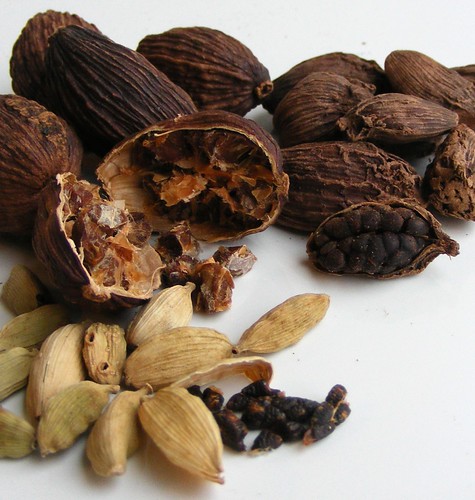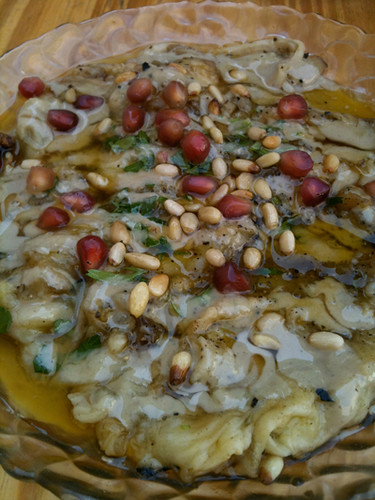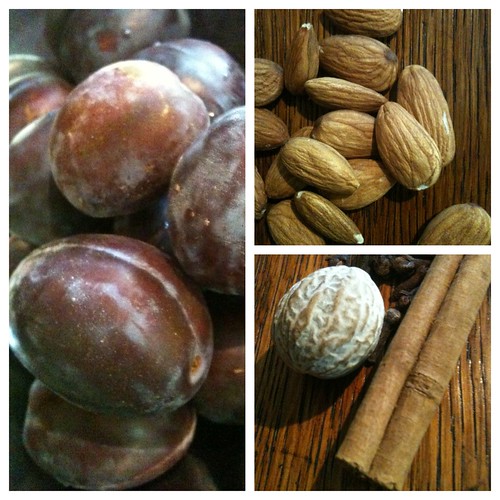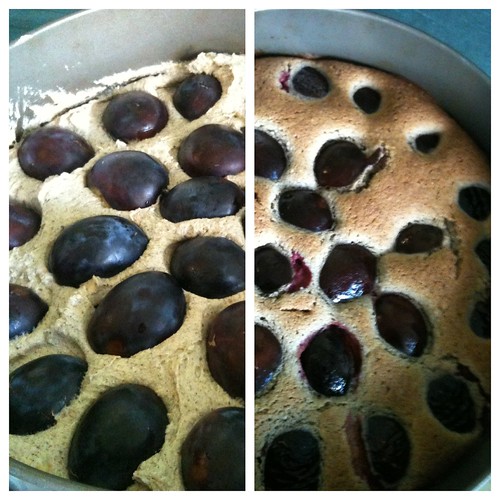Green & Black: Cardamom's Aphrodisiac Properties & Uses Explored
Cardamom is one of my favourite spices ever, being one that I’ve been exposed to from a tender age, under the name “hel” – and in this regard I’m not different than any other Middle Eastern kid who’ve been indulging in baklava in special occasions, or been tempted to take a sip of the grown-ups’ dark roasted coffee fragrant with cardamom.
What I love so much about cardamom is its complexity and versatility as it so readily lends itself to both savoury dishes, beverages, confections and desserts. My first times using it on my own initiative have been as part of my version of an aromatic vegetable stew for couscous, along with coriander seeds, cinnamon and cloves. And later on I learned how wonderful it can work in basmati rice, not to mention myriads of aromatic curries, masalas and other spice blends, and countless desserts – Oriental sweets are the obvious ones (Baclava, sahleb, sheera, gulab jamun, rice puddings and more), but also in European pastries and baked goods (carrot cake, banana bread, gingerbread, and many Scandinavian pastries, surprisingly).
So it is both with amusement and excitement when I learned that cardamom is also considered to be a “stimulating” aphrodisiac. Green cardamom (Elettaria cardamomum) is the fruit of a tropical plant related to ginger (Zingiberaceae) is picked when unripe and dried. White cardamom is simply green cardamom that have been bleached, so do avoid buying this “spice”. Black (aka wild) cardamom (Amomum costatum) and has some common traits in its aroma profile – with the camphoreous component amplified, but also with an unusual smoky and earthy note that is absent in the green variety
It is also quite different in how it can be employed in dishes, lending itself much more freely to savoury dishes such as hearty curries, soups and stews and as a component in garam masala.
Green cardamom is perfect in Middle Eastern and East Indian desserts – often paired with the flavours of rosewater, saffron, cinnamon, coconut and other nuts (Gulab jamun, Indian Halvas, Baclava, Harissa), or to top off puddings and steamed milk beverages (Sahleb, Banana Sheera). It also works wonders with ginger, nutmeg and mace in warming European pastries (gingerbread, carrot cake, banana bread, pfeffernusse and more).
And of course – it is used to flavour Turkish coffee (usually it is the only spice added) and Masala Chai, where it is blended with fresh ginger root, aniseed, fennel or star anise, black pepper and allspice berries along with Assam tea leaves.
In savoury dishes, cardamom is an essential in many spice blends, such as the Indian garam masala, and is put to use in countless Indian curries. Morocco’s famous Ras el Hanout and in the Arabic Hawayej blends. It’s best friends in savoury spice blends are coriander and cumin seeds.
Romantic Aromatic Bath with Cardamom & Rose
Transport yourself to the orient with this simple bath-time treat that is equally majestic to enjoy alone or with your lover:
Fill your bathtub with warm water, and sprinkle with one cup of epsom salts (you may also add 1/4-1/2 cup sea salt or dead sea salts if you wish). Epsom salts relax the muscles. Sea and Dead Sea salts purify and cleanse the skin.
When the bath is full, put one drop of each pure Bulgarian Rose Otto and cardamom oil or CO2 into the tub. Soak and enjoy the sweet and exotic aromas mingle and fill the air. It feels to me like a thousand petals of roses unfold and above it, the sweet exotic aroma of cardamom reminds me of eating Rahat Loukum in a Hammam (something I'm yet to experience...).
If you don't have pure rose otto or can't afford it, rose geranium oil would be a good enough substitute, although it's aroma is ever so slightly more citrusy and herbaceous. It still gets that Oriental sweets aroma when combined with cardamom though :-)
Basmati rice with cardamom & carrots
(adapted from "Moosewood Restaurant Low-Fat Favorites" - there is it called "Golden Basmati Rice" p. 185, which includes grated carrots, orange zest and 1/2 tsp each cinnamon and turmeric).
1 cup white basmati rice, soaked for 20-30 minutes, than rinsed and drained
1 onion, diced
1 Tbs. ghee (clarified butter) or grapeseed oilGenerous pinch of saffron, soaked in 1 Tbs. boiling water for 30 minutes
1/2 tsp salt (or more to taste - I recommend not using more than 1tsp per cup of rice)
1-3/4 cup boiling water
1/4 cup sliced almonds, slightly roasted on a dry cast iron pan (for about 2-3 minutes)
- Begin by soaking the rice in cold water, and the saffron in boiling water. While they are soaking, prepare the cardamom, cut the onion and have all your other ingredients handy.
- On medium heat, warm the ghee in a small (about a quart size) pot.
- Sautee the onions until golden.
- Add boiling water, salt and the saffron (with the water!), and bring to a boil again, without the lid. Reduce the heat to low, and cover the pot. Continue cooking for another 15 minutes, or until the rice is tender.
- Remove from heat, and keep the lid on for another 10 minutes. Be sure to keep the lid closed! This is the final stage of cooking, that will ensure your rice is well cooked, but nice and fluffy (rather than sticky...).
- While the rice is steaming quietly in the pot, prepare your almonds by roasting them gently in a cast iron pan. Be sure to stir and attend to them fully, so they don't get burnt! This will take about 2-3 minutes.
- When the rice is ready, fluff it with a fork, and transfer to a serving dish. Top with the roasted sliced or slivered almonds, and enjoy with your choice of curry, dal or Middle Eastern style casserole (such as eggplants, zucchinis or ladyfingers in tomato & pepper sauce).
SmellyBlog recipes with green cardamom:
Chai No. 1
SmellyBlog recipes with black cardamom:
Babaghanoush with Black Cardamom & Pomegranate
Black Beauty Chocolate Truffle (infused with Lapsang Suchong and Black Cardamom)
And my two One of a Kind current offerings:
Incense & ChocolateSandal Tree







